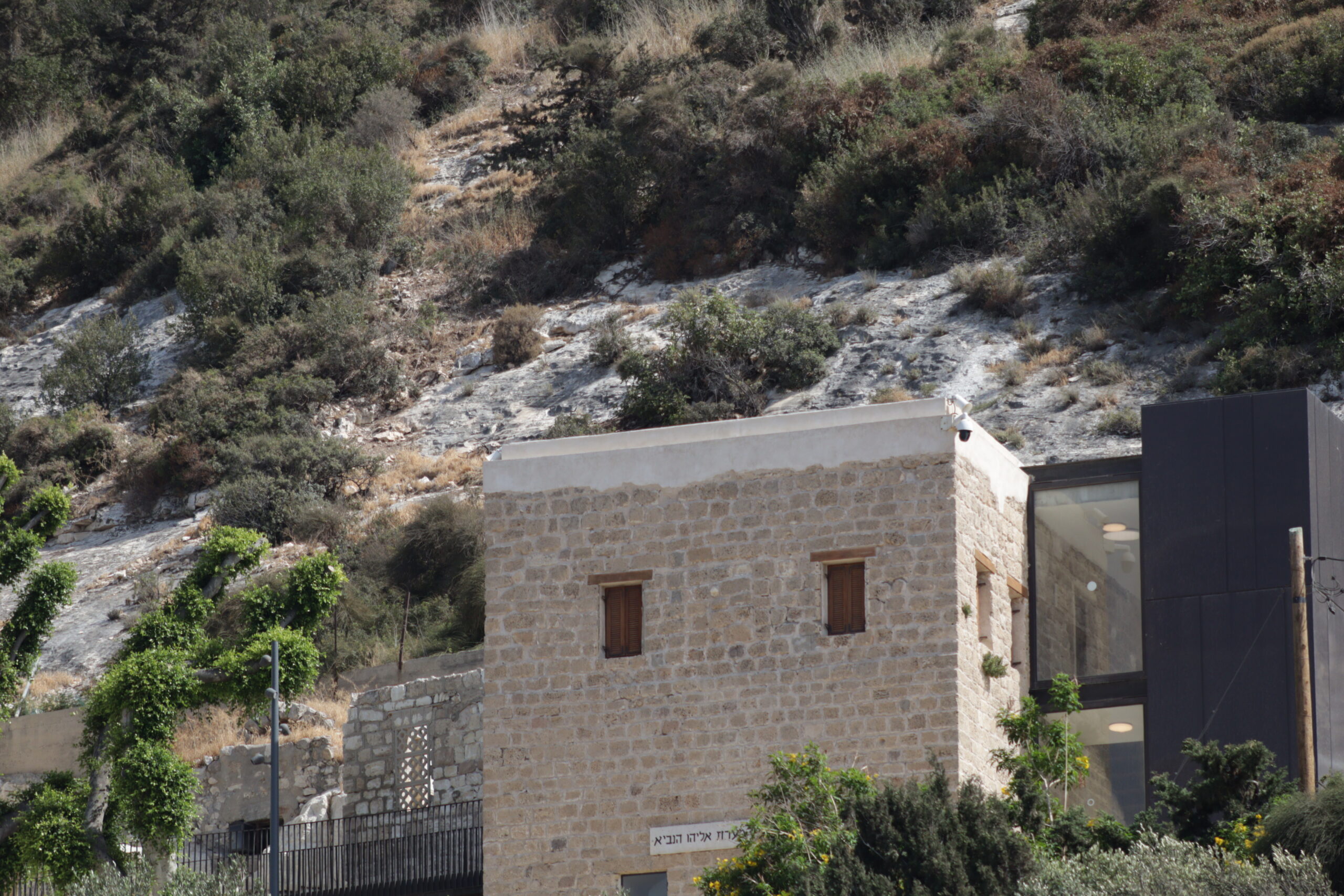Tucked into the arid limestone slope of Mount Carmel, the view captures the calm resilience of stone against a backdrop of parched brush and shrubs clinging to the rocky hillside. In the foreground, a small stone building stands with purposeful simplicity—its facade crafted from golden, weatherworn masonry that echoes centuries of pilgrimage and reverence. Two shuttered windows peer out from the upper floor, giving the structure an almost face-like expression. Atop the wall, a modern security camera juts slightly, an understated nod to the present watching over the sanctity of the past.

What makes this place more than a picturesque junction of heritage and topography is the spiritual weight it carries. This is Elijah’s Cave in Haifa, traditionally believed to be the refuge of the prophet Elijah during his flight from King Ahab. Whether one approaches the story from religious devotion, historical curiosity, or cultural appreciation, the site is undeniably rich in symbolism. Just beside the ancient structure, a sleek modern extension wrapped in glass and dark materials forms a stark contrast—an architectural dialogue between antiquity and contemporary reverence. Inside, glimpses of soft light, clean lines, and preserved stone suggest that the sacred is not only protected but actively lived with and interpreted anew.
The hillside behind, patched with low scrub and pale stone streaks, feels untouched and eternal, as if it had kept this cave secret for ages. Visitors who ascend this part of Mount Carmel find not just a historical landmark, but a moment of quietude and reflection. The site does not dazzle with grandeur; instead, it invites a kind of inner stillness. One does not come here for spectacle, but for grounding—for the feeling that something ancient and eternal still hums faintly beneath the heat of the rock and the whisper of the wind.
Haifa is a city of layers: ports and prayer, industry and ideology, gardens and grit. Yet Elijah’s Cave is one of its oldest and most consistent spiritual beacons. As you stand before the stone wall, with the mountain rising ruggedly behind it and the faint calls of the city muffled by the slope, you can almost imagine the prophet’s presence still lingering, sheltered by the cool dark within.
Leave a Reply